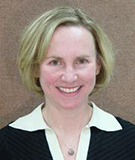WSU Tri‑Cities exhibition showcases art from faculty and staff statewide
adrianaAn exhibition at Washington State University Tri‑Cities will showcase art professionally created by WSU faculty and staff from across the state now through Feb. 28 at the WSU Tri‑Cities Art Center.
A grand opening for the exhibition is scheduled for 5 p.m.–7 p.m. on Jan. 31 in the WSU Tri‑Cities Art Center. The event is free and open to the public.
The exhibition will feature a range of styles of art, including interactive and electronic sculptures, ceramics, photography, painting, drawing and more. It will specifically feature works from 16 faculty and staff from the WSU Tri‑Cities, WSU Vancouver and WSU Pullman campuses.
At the grand opening on Jan. 31, attendees will have the opportunity to meet many of the artists featured, enjoy wine and light refreshments, as well as get an up‑close look at the works of art.
Remarks begin at 5:30 p.m.



